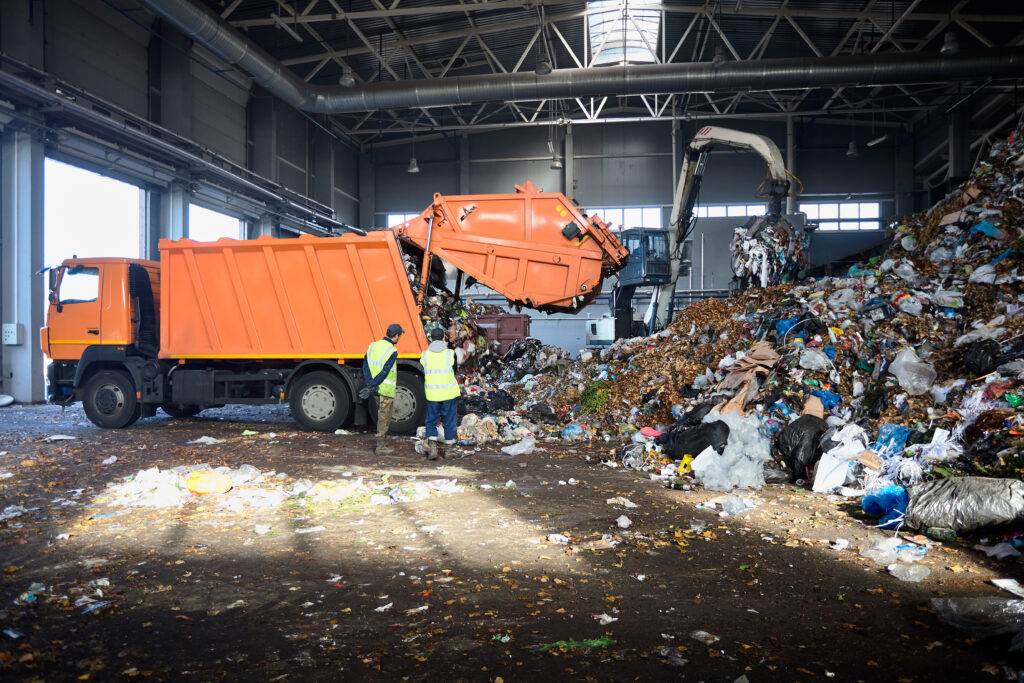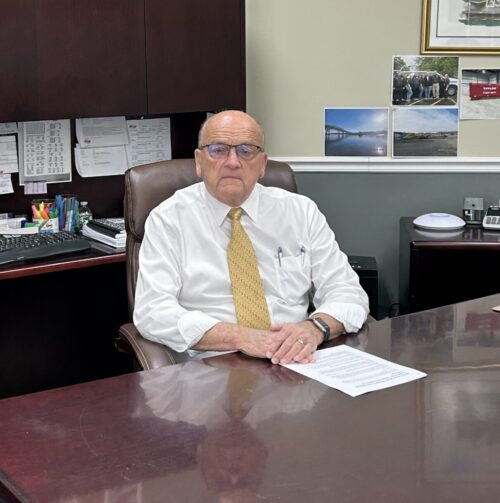Rewiring the Waste Stream: Could Biomass Gasification Change the Logistics of Garbage?

A proposed biomass gasification facility in Orange County, New York, just cleared a major regulatory hurdle for construction and operation. And it isn’t just another piece of green tech — if it works, it could fundamentally shift how waste is collected, transported, and converted into energy across the region.
By: Amy Roach | September 2, 2025
For decades, America’s waste system has relied on one default method: hauling garbage hundreds of miles to landfills or incinerators. But what if the waste stream itself could be rewired— transformed from a costly disposal problem into a local energy supply chain? That’s the question Jim Taylor has spent 30 years trying to answer through a method called biomass gasification.
“Why are we transporting garbage 500 miles one way,” Taylor asks, “just to put it in the ground where it will never, ever go away in anybody’s lifetime?”
Taylor, founder of Taylor Biomass Energy and Taylor-Montgomery, LLC in the Orange County town of Montgomery, New York, believes gasification could flip the script on waste logistics. Instead of relying singularly on long-haul trucking, regional facilities could sort, process, and convert garbage into renewable electricity—keeping the value, and the responsibility, closer to home.
From Landfill Alternative to Gasification
Taylor’s journey began in the early 1990s, when he recognized the limits of conventional recycling at Taylor-Montgomery, his family-owned recycling facility for construction and demolition debris. “We had maxed out the recyclable commodities,” he recalls. “We just needed more tools and more technologies to do more with the rest of the waste.”

Jim Taylor, President of Taylor Biomass Energy, has been on a decades-long mission to launch a biomass gasification plant in Orange County, NY. Realigning the logistics of waste, gasification helps reduce miles logged by waste-hauling trucks while also producing a sustainable energy source.
His first innovation was a landfill alternative daily cover, made from mixed waste that met soil specifications and spared landfills from using virgin dirt. But as landfills declined and regulations tightened, Taylor shifted to gasification in the late 1990s.
By 2000, he was pursuing patents, working with inventors and even battling billionaires in court over rights to emerging technologies. After years of litigation, he secured global patents—today, in more than 20 countries—on a non-combustion process that converts organic biomass into a clean synthesis gas (syngas).
The process to get where he is now has been anything but smooth: It took until 2010 for Taylor to receive a 10-year solid waste permit, and he waited another six years for a five-year renewal just issued this August. That permit expires in 2030—leaving Taylor only a narrow window to secure financing, build the planned facility (on an adjacent site in Montgomery), and begin operations before reapplying.
Complicating matters further, New York State’s Climate Leadership Act doesn’t recognize gasification in the same category as wind, solar, or hydro. “We’re not an incinerator,” Taylor explains. “We don’t burn waste. We gasify biomass. But regulators still don’t know what to do with us.”
Breaking Down the Waste Stream
Taylor’s process begins with rigorous sorting. He describes four constant categories in every load of waste:
- Unrecognizable matter (about 10%) that must go to landfill
- Organic biomass (roughly 65%) like paper, wood, textiles, plastics, and food waste
- Inorganics (about 23%) such as glass, metals, and concrete—“100% recyclable,” Taylor notes
- Household hazardous waste (about 2%), a fraction that continues to shrink with regulation
That 65% organic fraction is the fuel for Taylor’s patented gasification process. Using superheated sand at 1,800 degrees Fahrenheit in a closed-loop system, the technology converts solid biomass into a clean syngas. Unlike incineration, there’s no combustion and no uncontrolled emissions. The syngas is then fed into turbines to produce electricity—up to 25 megawatts, enough to power 23,000 homes continuously.
Logistics Rewired
The implications for supply chains and municipalities are profound. A single 330-ton-per-day facility, Taylor explains, needs about 1,000 tons of waste input, which translates to a population base of roughly 250,000 within a 30-mile radius.
“It’s a hub-and-spoke model,” he says. “Local haulers keep doing their thing, but instead of trucking trash across state lines, it comes to a regional gasifier. From there, it turns into electrons for the grid.”
This re-localization would cut greenhouse gases not only from decaying waste but also from the thousands of miles logged by waste-hauling trucks. By Taylor’s estimate, every plant could prevent 330,000 tons of greenhouse gases annually.
“Waste is a valuable resource. We have to stop wasting our waste.”
— Jim Taylor, President, Taylor Biomass Energy
Despite the many hurdles Taylor has come up against, demand for biomass is growing. Additional counties in New York, including Ulster and Sullivan, have issued RFPs for alternatives to landfills; Taylor submitted a bid for Ulster and is waiting for the bid from Sullivan. There are also potential project sites in Connecticut.
Once his plant is up and running, Taylor expects interest from surrounding areas to increase.
The economics may drive adoption. New York currently pays around $125 per ton to dispose of waste—among the highest rates in the country. (Ulster County, NY, just announced an increase to $150 per ton, starting January 1, 2026.) Factor in rising carbon penalties, and local gasification could become the most competitive option.
“By deductive logic, this might be the only viable solution,” Taylor says.
The Takeaway for Logistics
For the logistics sector, biomass gasification represents both a challenge and an opportunity. Traditional waste hauling contracts, built around long-distance disposal, could be disrupted by shorter, localized routes. New infrastructure will be needed for sorting and preparation. But for supply chain leaders, the model offers a path toward circularity—turning waste from a liability into a localized energy source.
As Taylor sums it up: “The environmental world is demanding we process our waste differently. This could be it!”
